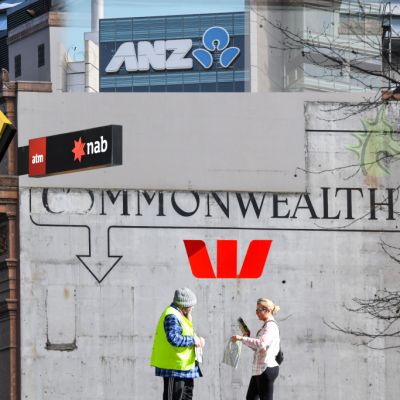Changes to home loan rules could boost the average buyer’s budget by $70,000
The average buyer could expect to have an extra $70,000 to spend on a home after changes to responsible lending rules, one consumer expert says, in a move that could push up property prices.
Responsible lending laws are set to be wound back in a bid to allow banks to lend money to customers more easily, Federal Treasurer Josh Frydenberg announced last week.
Although the details of the change are not yet clear, customer expenses have been in the spotlight after banks clamped down on lending practices under scrutiny from the financial services royal commission, refusing to grant loans to borrowers who spent too much on Uber trips or takeaway.
The landmark “wagyu and shiraz” judgment later ruled borrowers could cut back on spending when they bought a home to meet mortgage repayments.
If requirements to assess borrowers’ expenses ease, an average buyer may see a jump in their purchasing power by about $70,000, Canstar group executive of financial services Steve Mickenbecker says.
Based on an average income of about $80,000 and a 20 per cent deposit, he said a would-be buyer might have the amount they could borrow increase from $440,000 to about $510,000.
“I don’t have a crystal ball for this,” he said. “That’s a hypothetical number.
“The banks were grilled rather ferociously over their assessment of lending [during the financial services royal commission], in particular their assessment on people’s budgets.
“Banks retreated a little bit and said we have to put all sorts of scrutiny on people’s budgets.
“[They] will be likely to move some distance from that and return to formulaic thinking.”

Mr Mickenbecker assumed rolling back the requirement to heavily scrutinise living expenses would lead to the assessed level of expenses going down, allowing the average person to get a loan $70,000 larger.
But winding back that one rule would not be enough to cause a jump in buying power across the board, Mr Mickenbecker said.
“We’ve seen lenders tightening on credit in other ways,” he said. “Sources like rent, casual employment, those sort of places – banks have already said, ‘We’ll be tougher on that, in terms of giving out credit’.”
Foster Ramsay Finance director Chris Foster-Ramsay said any changes to responsible lending rules would likely be a happy medium.
“It’s important [for brokers] not to put people into loans they can’t afford. You’re just not in this game to do that,” he said. “I would be very surprised if it were throwing out the entire book and starting again.
“It’ll be a happy medium between what the Treasury has announced and the requirement to lend responsibly.”
40 Forty Finance director Will Unkles said the changes would likely reduce some friction in the lending process, but not increase buying power drastically.
“It does depend on exactly what is passed. However, I’m unaware whether the changes will enable people to borrow more, if the changes will enable access to credit to become an easier process,” he said.
“Potentially the amount of paperwork and rigmarole and questions a lender has to ask will allow credit to flow quicker and easier into the market.”
No matter the content of the changes to the laws, experts agreed it would put upwards pressure on house prices by creating more demand.
Mr Foster-Ramsay said how much would depend on how the change in economic conditions brought on by the pandemic.
There might be “a demand spike and then a plateau”, he said.
Mr Mickenbecker agreed it was too soon to tell if it would lead to a price spike.
“In isolation this is something that will have a positive influence on prices,” he said. “When you net it out against the other supply side movement, maybe it compensates rather than increasing supply. But it does ease one barrier from buying a property.”
Mr Unkles echoed their sentiments. “The logical thing would be upward pressure on prices, but it’s hard for me to guess how strong the downward pressure on prices is and what the net effect would be,” he said.
We thought you might like
States
Capital Cities
Capital Cities - Rentals
Popular Areas
Allhomes
More









